Backyard garden tips: How to cheat winter and keep your home green all year round
You don’t have to work with the seasons at home, make them work with you.
Outdoors
Don't miss out on the headlines from Outdoors. Followed categories will be added to My News.
Mid winter, gardens don’t always fare their best. Trees are bare, foliage has died and wet weather can leave them abandoned for weeks.
However garden designer Brenton Roberts sees it differently and says there are ways to make a winter garden look just as beautiful as a spring one. Use the right elements and a garden in winter can create stunning impact via silhouette, structure and colour.
His Adelaide Hills garden is a delightful example.
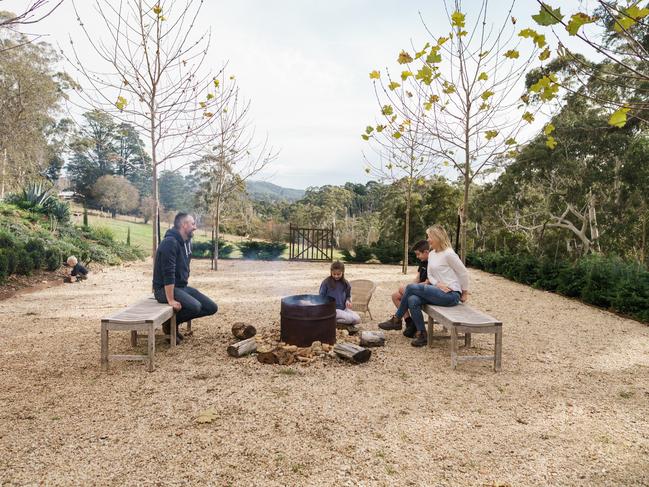
Bare branches are elegantly splayed against walls and along trellis wires, decaying straw-coloured foliage allow shapes to stand out, and a series of levels and green layers provide a tapestry of textures.
The passionate gardener, which is not his full-time job, has grown a healthy Instagram following, too, as many observe his garden’s journey through the seasons.
Established as it is, it’s hard to imagine none of it was here 10 years ago when his family of five moved into the five-acre Aldgate property in Adelaide when the garden was nothing more than a steep slope.
Stunning silhouettes
Now deciduous Manchurian pear trees line Brenton’s hillside driveway and in winter the tracery of these broad trees create an elegant avenue of seasonal beauty. They formalise the garden with height and repetitive scale, acting as a backdrop for other parts.
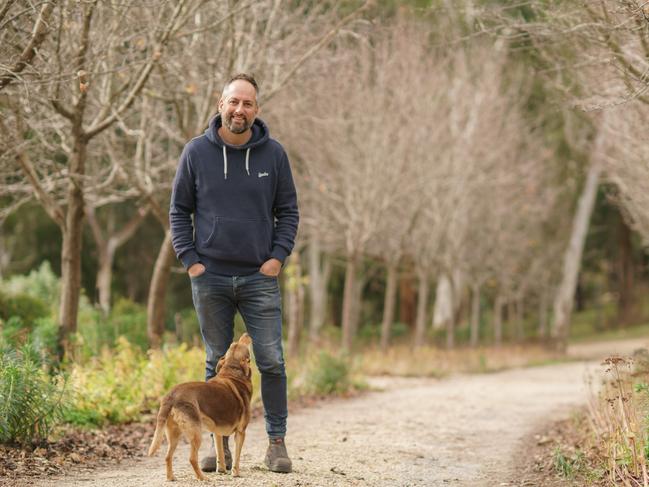

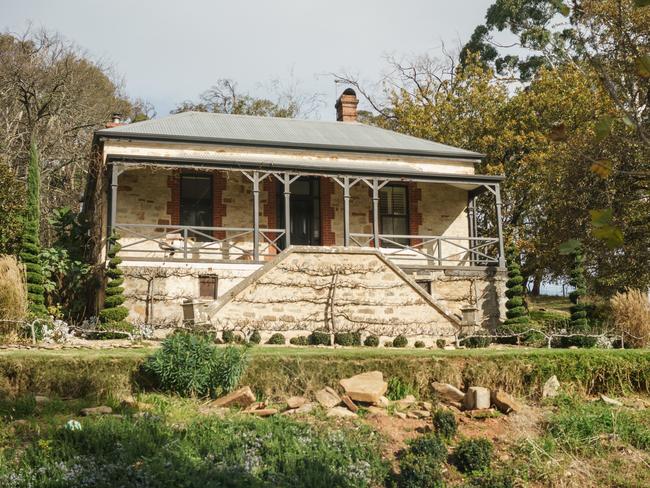
“Maintaining structure in the garden is really important during the winter months, particularly in those gardens inclined towards deciduous trees and perennial plants,” he says.
Pear trees espaliered in perfect horizontal lines along the stone walls of his home, and a fig hedge, kept low, along the path, are plants Brenton regularly tends to keep in order. The well-clipped branches, corkscrew topiary and balls of English box appear high-maintenance, yet he says a quick trim keeps them in check.
“Structure and interest can also be achieved by using techniques such as espaliering and pollarding (removing upper branches to form a dense head) trees,” he says.
“While these techniques can seem intimidating, time-consuming and potentially tedious, plants are forgiving, and the results can be quite spectacular and satisfying over time.”
Decaying plants
Brenton says gardeners should never lose sight of decaying plants and rather than pulling them out, dying straw-coloured foliage, such as his towering artichoke plants and sedum, add visual contrast in the height of winter.
“Plants such as sedum ‘Autumn Joy’ will transition from a deep green through to yellow and then to a twiggy, light brown, all the while retaining its flower head for show. It is truly a beautiful plant in all seasons,” he says.



“Likewise grasses such a Miscanthus sinensis or Calamagrostis x acutiflora (feather reed grass) also dry off during winter and become a lovely straw colour, which contrasts so well with the other greys and greens in the garden.”
Structured approach
A majestic oak tree at the top of Brenton’s drive shows the undeniable beauty of established trees.
But even with its dense canopy of lobed leaves, it is the terraced gardens Brenton has formed in front of his 1860s cottage that make this winter garden special. The higher level, a lush lawn adjacent the house, is a practical place for the kids to play footy and Thorby the dog to roll around, while Brenton uses it as a teeing ground for his golf passion.
In contrast, a crushed quartz courtyard, framed by London plane trees, dominates the lower terrace where a fire pit welcomes you into this wintry setting with a sense of social occasion. You can imagine the afternoon parties and long lunches that will be held in this picturesque zone in the years ahead.
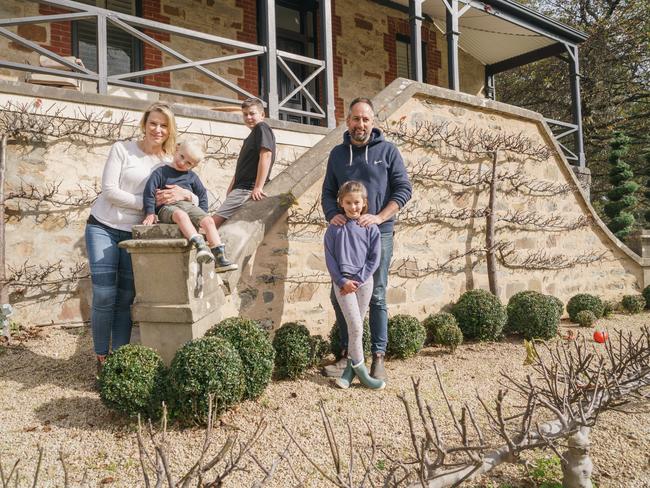


An embankment between the levels is Brenton’s current work-in-progress but on other sides, young Private Green hedges are starting to take off and will one day surround this garden room, while also helping alleviate the gully winds that sweep through the area.
While the terraces organise the garden, the structural plants such as clipped balls of teucrium fruticans, pencil pines and giant cacti, become more obvious in the winter than any other time of the year and are allowed to shine.
“The use of evergreen plants such as Cupressus sempervirens Glauca (pencil pines), help provide height and interest, and contrast nicely as the perennials fading into decay.”
Colour story
Layers of green, from blue-grey greens to dark leaves, provide depth and tone. Carefully clipped buxus and succulents are a repeating feature, and in between are bursts of colour from lavenders, bright yellow-green Euphorbia wulfenni and purple-tipped salvias, and prostrate rosemary.
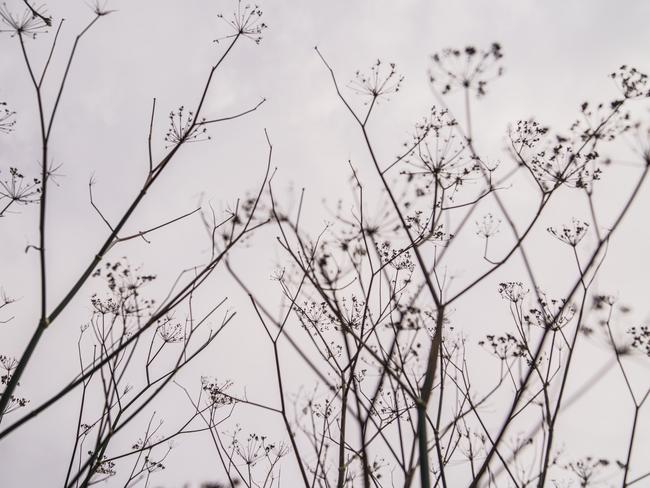
GARDENING TIPS TO CREATE THE PERFECT WINTER GARDEN
“While gardeners have fewer flowering plants to choose from during the winter months, these are some great options that will help achieve colour and interest at this time of year,” says Brenton.
● Don’t ignore hardscaping elements that add tactile and sensory impact, such as gravel paths, which provide a reassuring crunch underfoot.
● Brenton collected old iron gates (try Gumtree) to add character and a sense of history too.
● Evergreen climbers such as Chinese Star jasmine or climbing figs are great to hide tired walls or fences, and are an alternative to more showy deciduous climbers such as Boston ivy or Virginia creeper.

●Techniques such as espaliering and pollarding (removing upper branches to form a dense head) trees create structured lines and defined shapes.
● Clipped balls of English or Japanese box, westringia or lavender help maintain colour and structure in wintertime.
●To combat winter weeds, planting ground covers is an easy excellent way to address this issue. Brenton’s favourites include prostrate rosemary, juniper sabina and cotoneaster dammeri, all of which form a thick carpet of foliage.
For all your gardening ideas, inspiration and advice visits us At Home.
Originally published as Backyard garden tips: How to cheat winter and keep your home green all year round




